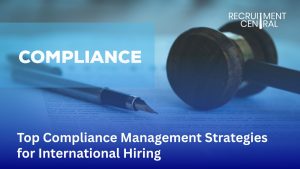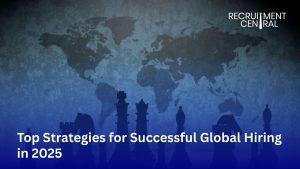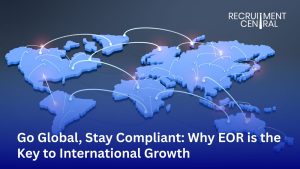Introduction
I have been working with different types of businesses for a long time now, and do you know what I find to be one of the hardest parts of running a business? It is building a great team because I think, as a business, one of the most important things you need to do is help your team grow, keep them motivated, and make sure that they stay with you.
This happens almost everywhere. No one can deny that everyone cares about their team and the hardest part is managing the team and honestly, trying to manage all of this by hand does not work anymore, especially in places like start-ups or big companies.
So, what is the solution? It’s easy. You can figure out all of this stuff in a very easy and efficient way by just using a Talent Management System (TMS). It makes a big difference and helps in making things easier and taking better care of the team.
A TMS makes things a lot easier by putting everything like hiring, training, new employees, performance, and planning for future roles, all in one simple system.
Trust me, once you start using one, you won’t be able to imagine doing your stuff the old way again.
In this article, I will explain what a talent management system really is, how it can help your business, and how to see the value it brings.

What is a Talent Management System?
So, what exactly is a talent management system? Let me tell you a very simple way. It is a set of HR tools combined into one platform. It helps with everything related to managing people, like hiring, onboarding, training, and everything.
It makes all people’s related work easier and makes it more connected. This way it helps the HR team save time, stay organized, and make sure what they are doing actually supports what the business is trying to achieve.
Also Read: Guide to Choosing the Right Talent Management System
Core Features To Expect in a TMS
A good talent management system (TMS) comes with a bunch of built-in tools that help HR run things smoothly. Here is how it works:
Recruitment and Onboarding
A TMS will make your recruitment and onboarding easy, and it will save you so much time. It will automate a lot of the work like job ads, looking at the resumes, or handling any other paperwork.
Performance Management
As the name suggests, with this, you can give feedback and evaluate your employees based on their performance. I think it is super beneficial for looking out for the best employees and it also helps with those year-end reviews.
Learning and Development
With a TMS, you can create and manage training for your employees. It will show you who has finished which training and will also help people grow in their careers.
Succession Planning and Compensation
Now this one helps you identify future leaders based on their skills and makes sure salary and rewards are as on their performance. I really like how this brings fairness and transparency into compensation.
Benefits of Using a TMS
Below I have stated a few key benefits of using a TMS:
Faster Hiring
With a TMS, you can hire and onboard applicants very fast and very easily because the whole process is automated and it saves you a lot of time.
In fact, I read a LinkedIn business report that said companies using proper recruitment software were able to reduce their hiring time by about 30%. See? Like I said!
Improved Retention
I have seen one thing. When employees feel like they are important and get personalized learning plans and feedback, they feel like a part of the team and are more likely to stay.
Deloitte even found that companies with a strong learning culture had 30-50% better engagement and retention, and it makes sense as well because people want to feel like they are growing.
Data-Driven Decisions
TMS dashboards are honestly one of my favorite features. Here you can see patterns in hiring, spot skill gaps, and even track turnover before it becomes a problem. It takes a lot of guesswork out of planning.
Higher Productivity
When so many tasks are automated and are done in minutes, this helps you save a lot of time. You can actually put this time to focus on bigger and better stuff like building strategy and improving culture.
How to Measure the ROI of a TMS
So if you are wondering, whether your TMS is actually paying off, here is a simple formula, you can start with:
ROI (%) = (Net Gain/ Cost) x 100
First, list out everything you are spending on the system, things like software fees, setup costs, and training for your team. Then compare that to the benefits, you can actually measure like:
- Are you hiring people faster now?
- Has employee turnover gone down?
- Are you making fewer compliance mistakes (and avoiding fines)?
- Are your people more productive?
Here’s the thing- ROI isn’t just about quick wins. You will get a clear picture of whatever time and capital you saved with the help of TMS over a couple of years.
Also Read: How to Use a Cost to Hire Employee Calculator Effectively
Best in Class: PeopleCentral
If you are running a business, then I suggest you check out PeopleCentral. It is a cloud-based talent management system based in Singapore, and honestly, it is built with businesses in mind.
It covers everything, including hiring, onboarding, payroll, and performance reviews, and it even has an AI chatbot that answers HR questions for your team.
I have seen more and more companies leaning into it, including big names like Hyundai, Bandai, Namco, and DHL. It is trusted by over 100,000 users, and it has even won gold in the HR Vendors of the Year Awards 2024.
I have seen many customers from many businesses give very positive feedback for their software, and I think it is that kind of feedback that makes you pay attention.
Conclusion
So, from everything I have seen and experienced, I’ll say having a talent management system in place is a must. It will not only just make HR’s life easier, it will actually help your whole team grow and stay longer.
At the end of the day, it is about finding a system that supports your people in the right way. If you do that well, you will see the difference, not just in productivity, but also in the culture you are building.







